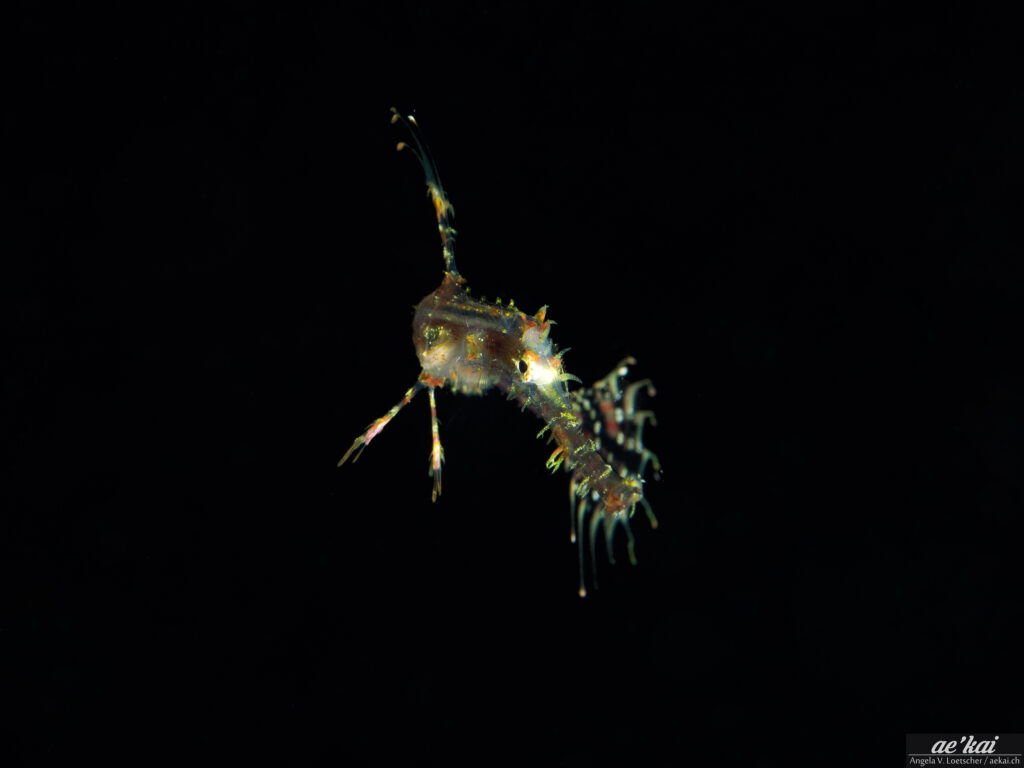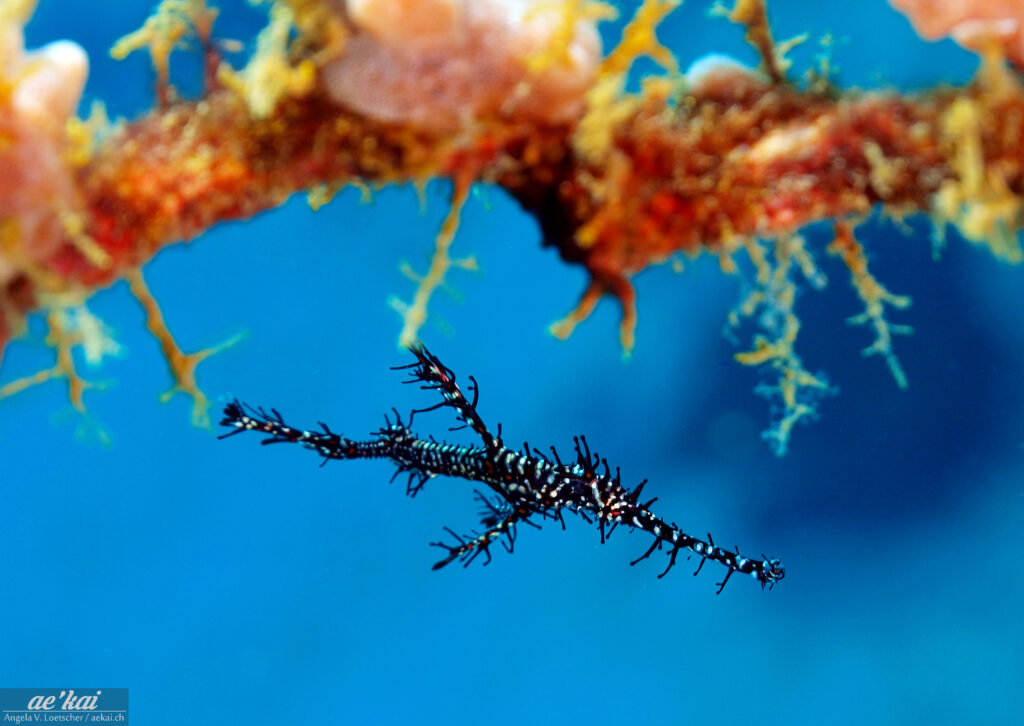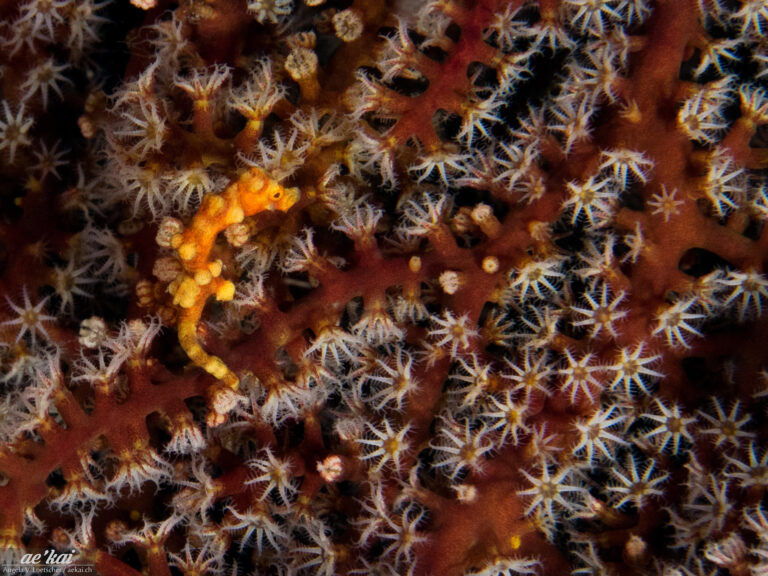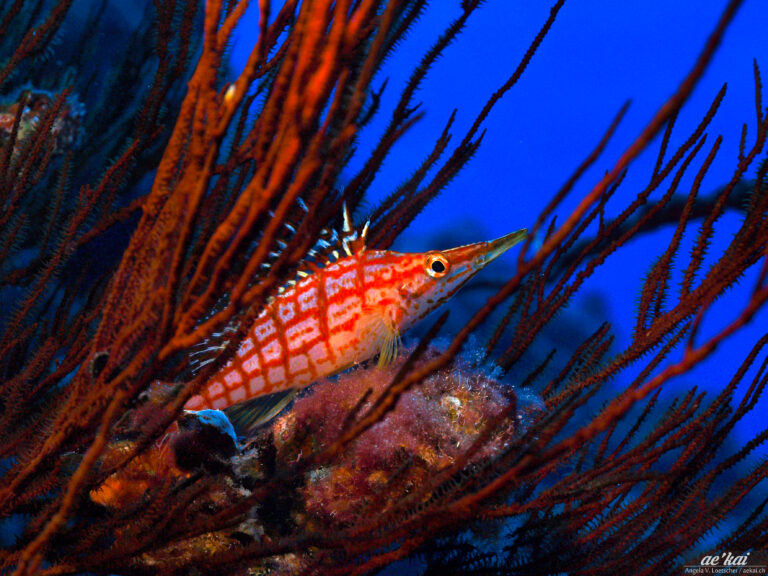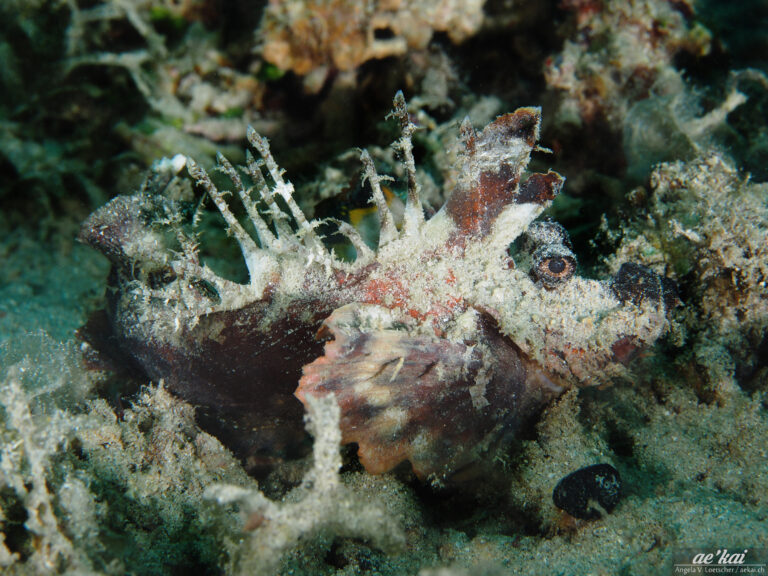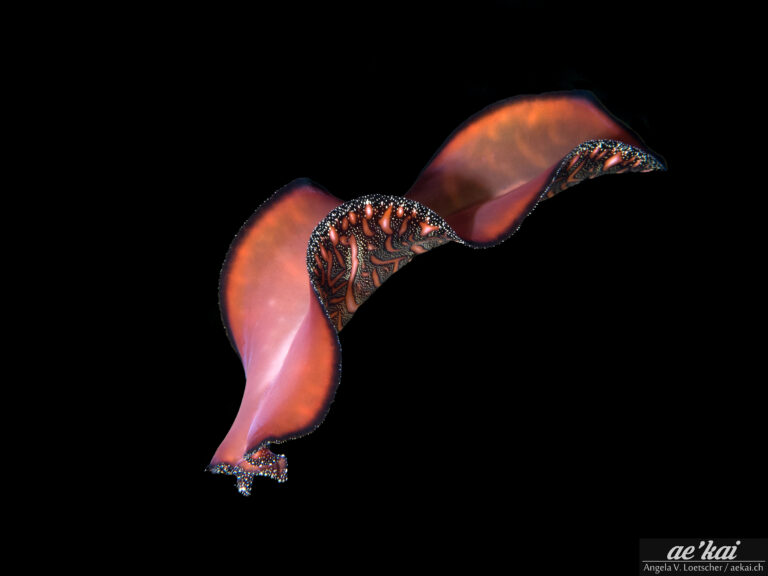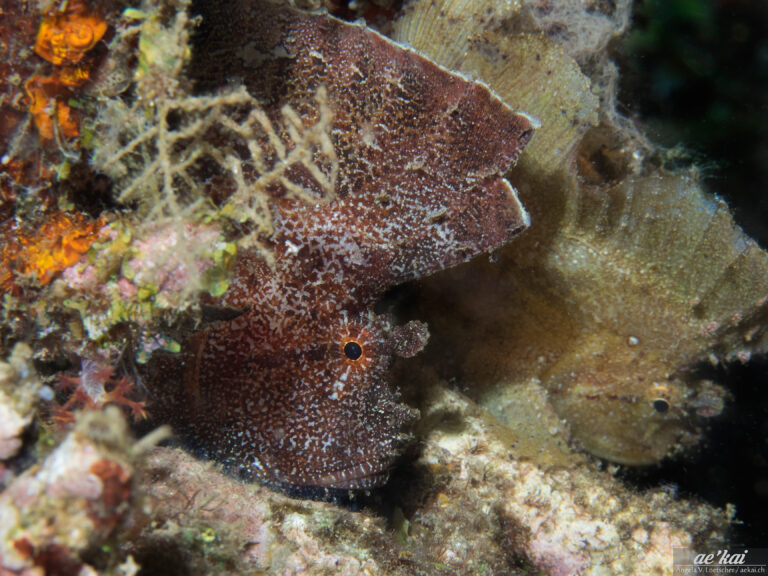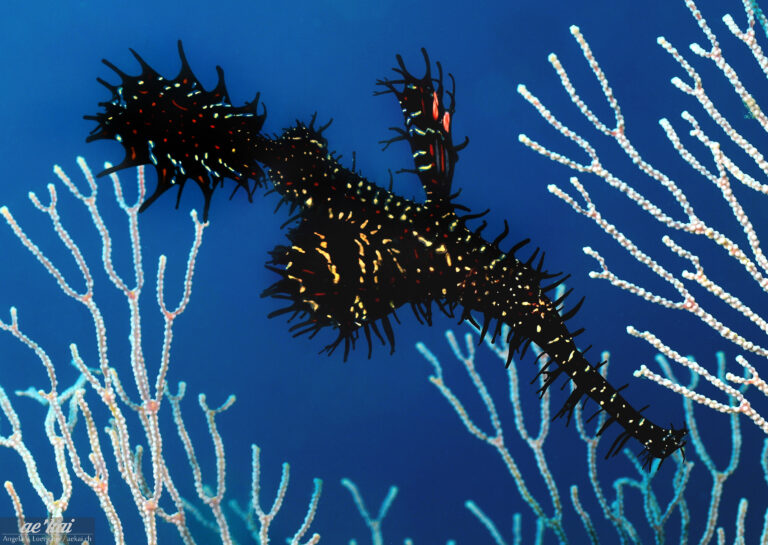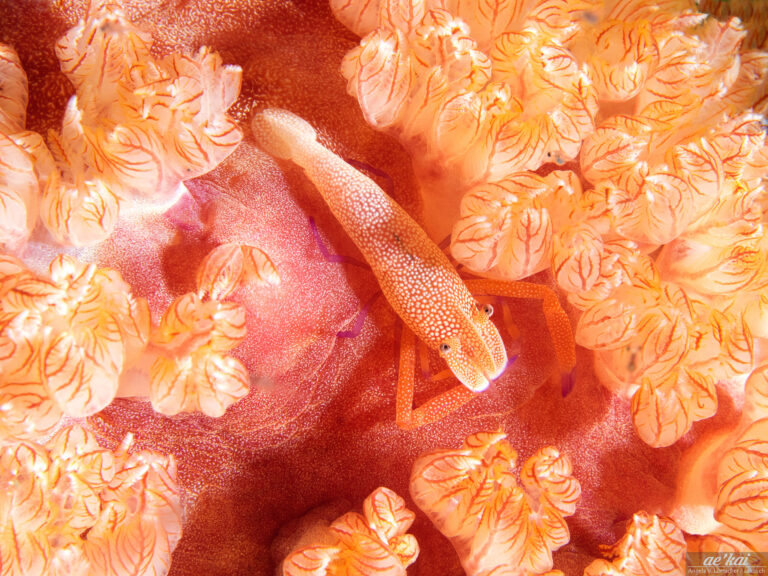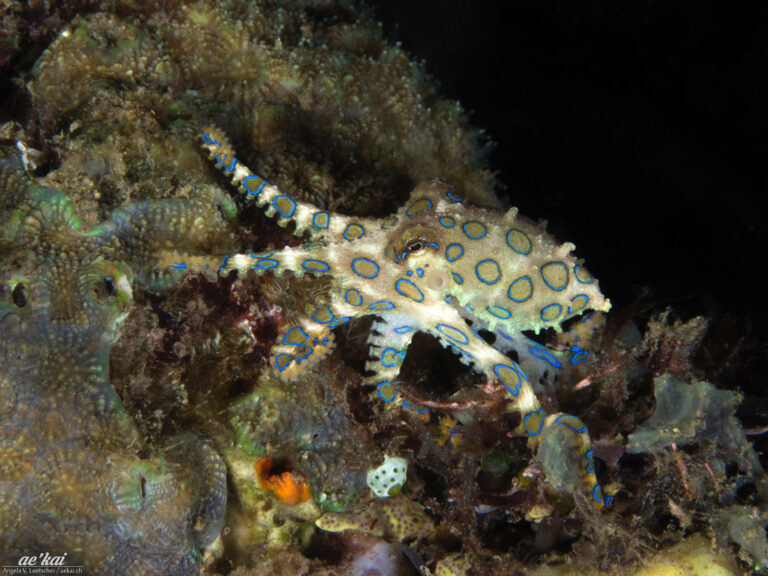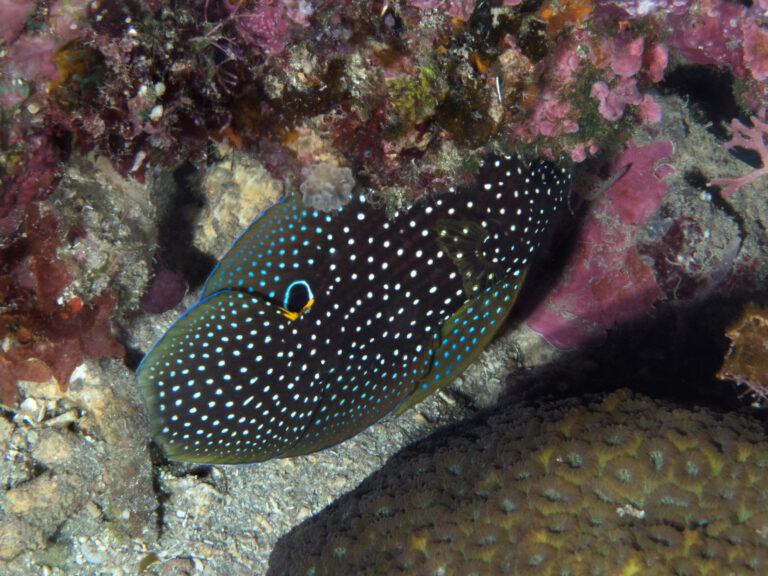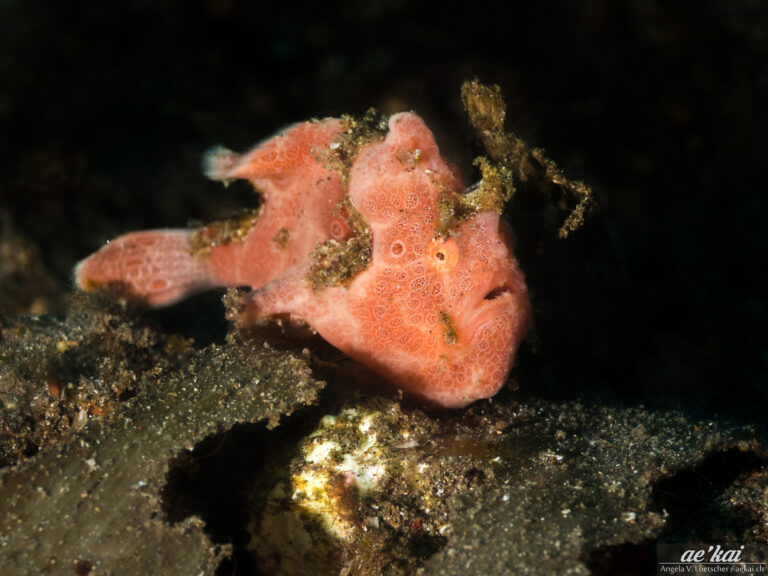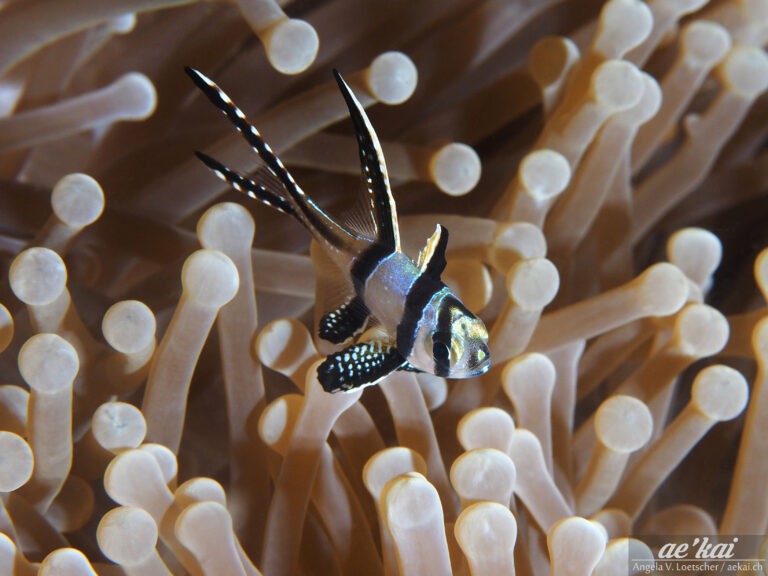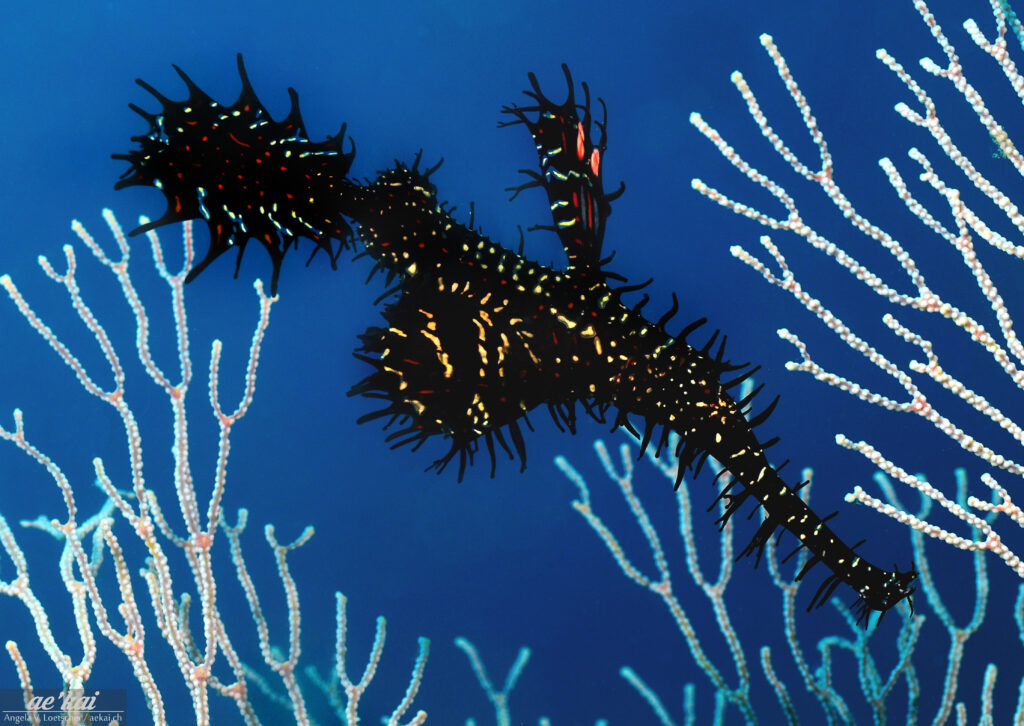
EN: Ornate Ghost Pipefish | Harlequin Ghost Pipefish
DE: Schmuck-Geisterpfeifenfisch | Harlekin-Geisterpfeifenfisch
Family
Ghost Pipefish
(Solestonomidae)
Size
max. 12 cm
Diet
Small Crustaceans
Distribution
Western Pacific to
Indian Ocean
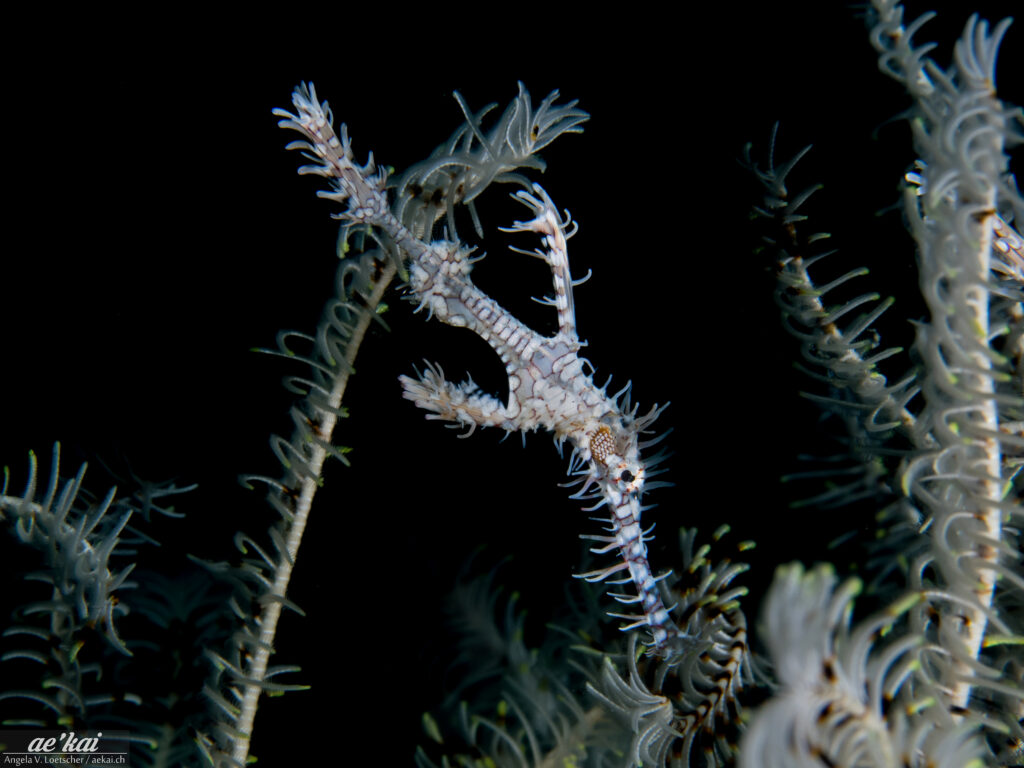
The Ornate Ghost Pipefish (Solenostomus paradoxus) belongs to the family of Ghost Pipefish (Solenostomidae) and to the same order as Seahorses, Pipefish, Trumpet Fish, Cornet Fish, Razor Fish, Dragonets, Goatfish, Flying Gurnards and Seamoths. The scientific name comes from the Greek and is composed of Solenostomes (= tube mouth) and paradoxus (paradox, which refers to its unusual appearance).
Its distribution area ranges from the Western Pacific to the Indian Ocean, where it lives as an ambush predator in reefs with a slight current at depths of up to 30 m.
There it also finds enough of its preferred food: floating shrimp (Mysida) and other small crustaceans, which it sucks into its tube-like mouth.
It lives mainly in/around feather stars, gorgonians or soft coral. Solenostomus paradoxus grows up to a length of 12 cm. The females are usually larger than the males.
The body, which is protected by up to 35 bone plates, varies in color between black, red, yellow or white up to completely transparent in juveniles, which have only recently settled on the reef. The basic coloration is interspersed with irregular stripes and spots. The whole skin is covered with soft, fringe-like outgrowths (similar to short tentacles). The snout is very elongated and the upper part of the mouth opening extends upwards. The fins are all rather spade-shaped or rounded and, compared to those of the related pipefish, large and well developed. The gills are small-spotted and therefore well visible compared to the coloration of the rest of the body. All in all, it is perfectly camouflaged by its appearance.
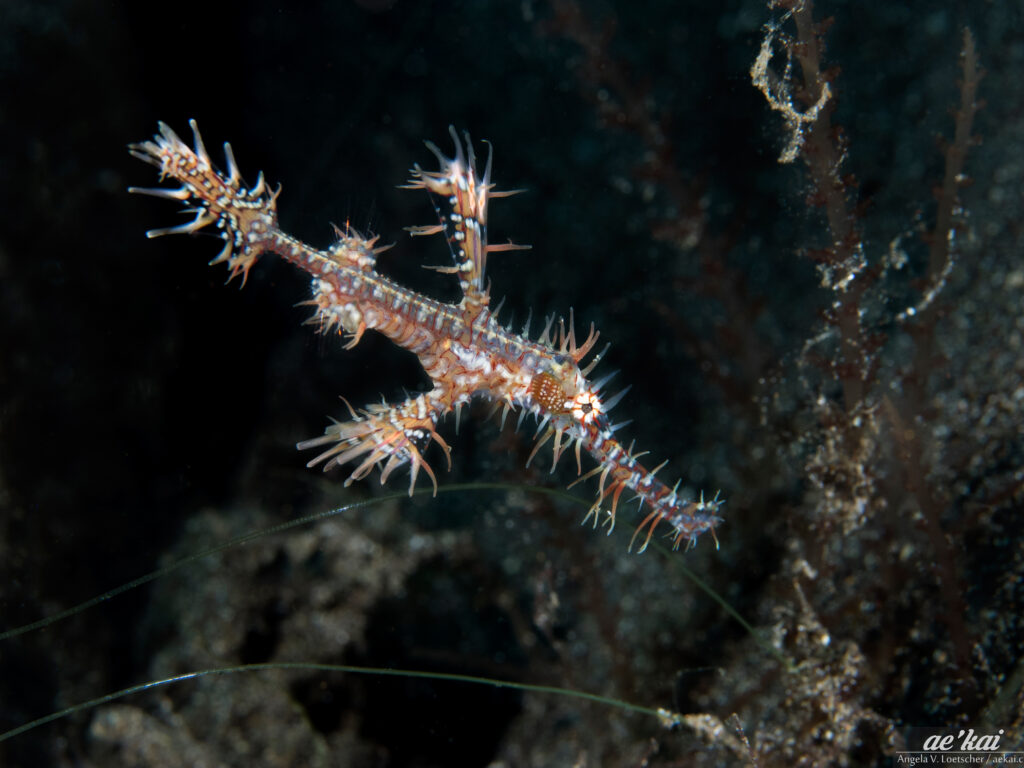
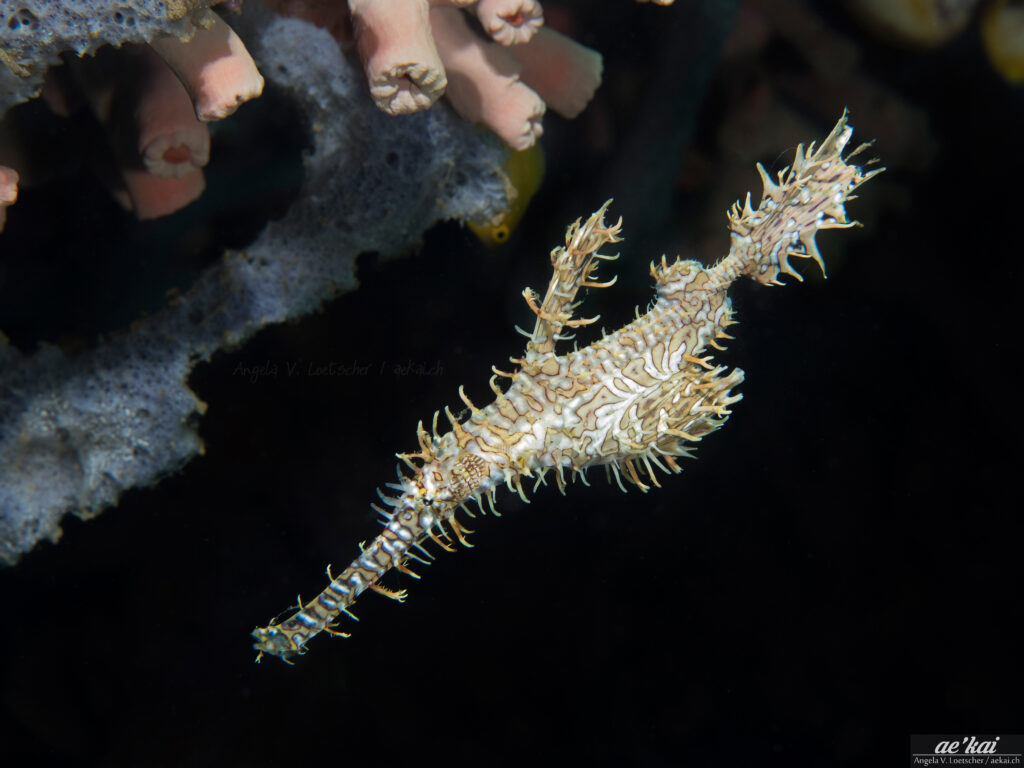
Although Solenostomus paradoxus are usually found in pairs, they can also gather in groups of up to 12 animals. The ghost pipefish is not necessarily rare in its area of distribution, but is difficult to find because of its great camouflage.
Lifecylce
Solenostomus paradoxus seems to be monogamous at least during the mating season, but probably also beyond that and it is also quite location-loyal. After the mating, unlike other species of seahorse, the 30-350 eggs are carried out by the female in a brood-bag. The caudal fins are modified to a brood-bag to that purpose. How long the incubation lasts is unknown. At the time of hatching the larvae are already in an advanced stage and are about 3 mm long.
After hatching, the larvae enter a pelagic phase, which means that they live in open water away from the reef until they reach a certain size. Here their body is completely transparent so that they are better camouflaged. When they reach the next stage, they settle on the reef and after a while they change their color to match their chosen surroundings. It is assumed that they can change their color several times. Although not much is known about their way of life and too few studies are available, it is assumed that Solenostomus paradoxus is not very long-lived.
